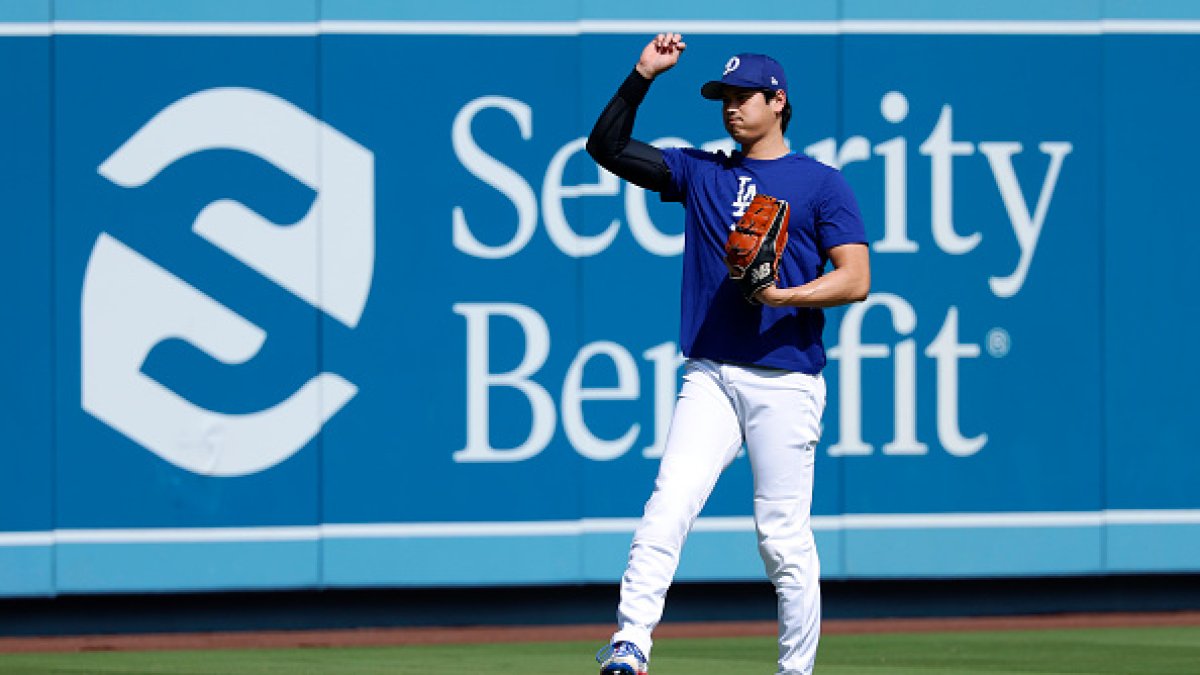For everyone in attendance inside an empty Dodger Stadium on Wednesday evening, it was simply business as usual.
The Los Angeles Dodgers had just returned on the team charter from Milwaukee after winning the first two games of the National League Championship Series over the Brewers on the road.
Wednesday’s workout was more of a formality, a chance for the players to stretch and prepare for Game 3 at Chavez Ravine on Thursday afternoon.
Pitchers went through bunting and pick-off drills, position players played catch and practiced defense, even a few took part in a light batting practice.
And then, Michael Bublé’s “Feeling Good” echoed throughout the stadium. The recognizable smooth brass melody drifting across the infield dirt and echoing off the empty blue seats. A melody that even Bublé himself knows means it’s time for a Shohei Ohtani at-bat.
Then, almost on cue, Ohtani appeared from the dugout — bat in hand — and the silence shattered.
The two-way superstar, known for his meticulously private pregame routines, did something he almost never does: he took batting practice on the field. Not in the hidden tunnels beneath the stadium where he usually fine-tunes his swing against the speed machine — but under the sun, in full view of his teammates, coaches, and the curious media who quickly started recording with their phones from the field and the press box.
“Hey, Japanese media!” yelled Dodgers’ manager Dave Roberts from the field. “Shohei is hitting!”
When Ohtani stepped into the box, the Dodgers players couldn’t resist. “Bunt!” someone shouted, drawing laughter across the diamond. To everyone’s surprise, he obliged — deadening an imperfect bunt toward third base as Dodgers’ infielder MIguel Rojas came charing in.
Then came a swing and a miss on the second pitch. A rare sight — the kind of moment that reminds everyone that even baseball’s most gifted player is human. The swing and miss brought laughter and screams from Dodgers teammates. Max Muncy, Freddie Freeman and Clayton Kershaw all came running over to watch from behind the cage.
But as the next few pitches came, Ohtani began to find his rhythm. The crack of the bat echoed through Chavez Ravine — sharp, distinct, familiar. Line drives turned into towering fly balls, and then one swing sent a ball arcing high into the late afternoon sky.
It didn’t just clear the right-field bleachers. It left the stadium entirely.
Suddenly the laughter and taunts turned into dropped jaws and awe. Even the stoic Dave Roberts couldn’t help but yell “WOW!”
“He’s got no pop!” joked Freeman.
The spectacle came at a time when Ohtani’s bat had cooled off in October. Entering Game 3 of the National League Championship Series against the Milwaukee Brewers, he was just 2-for-25 with 12 strikeouts since the Wild Card round, though his clutch RBI single in Game 2 might’ve been a sign of life. The Dodgers don’t doubt him. They never have. They know that when Ohtani decides to make a statement, he does it with purpose.
And maybe that’s what this was — a subtle message to himself and to the baseball world: the storm is coming.
For now, it was just batting practice. But for a few minutes on a quiet Wednesday in Los Angeles, it felt like something much bigger — the calm before Ohtani’s next explosion.

